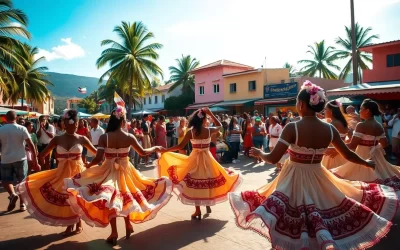✓ Accommodations✓ Flights✓ Rental Cars✓ Tours & Activities
Welcome to a fascinating exploration of the language landscape in the Dominican Republic. This vibrant Caribbean nation, covering about 18,700 square miles, is home to a population of nearly 10 million people. Here, Spanish reigns as the official language, with Dominican Spanish being the most commonly spoken dialect.
The capital, Santo Domingo, is a bustling hub with roughly 3 million residents. While Spanish dominates, the country’s cultural diversity introduces other languages and dialects. From Haitian Creole to Samana English, the linguistic tapestry reflects its rich history and influences.
In this article, you’ll discover how language shapes daily life, culture, and identity in the Dominican Republic. Let’s dive into the unique dynamics that make this nation’s linguistic heritage so captivating!
Overview of Language Diversity in the Dominican Republic
The Dominican Republic’s linguistic landscape is as diverse as its people. With a population of nearly 10 million, the country’s dialects and accents vary widely across regions. From bustling cities to serene rural areas, the way people speak reflects a blend of history, culture, and geography.
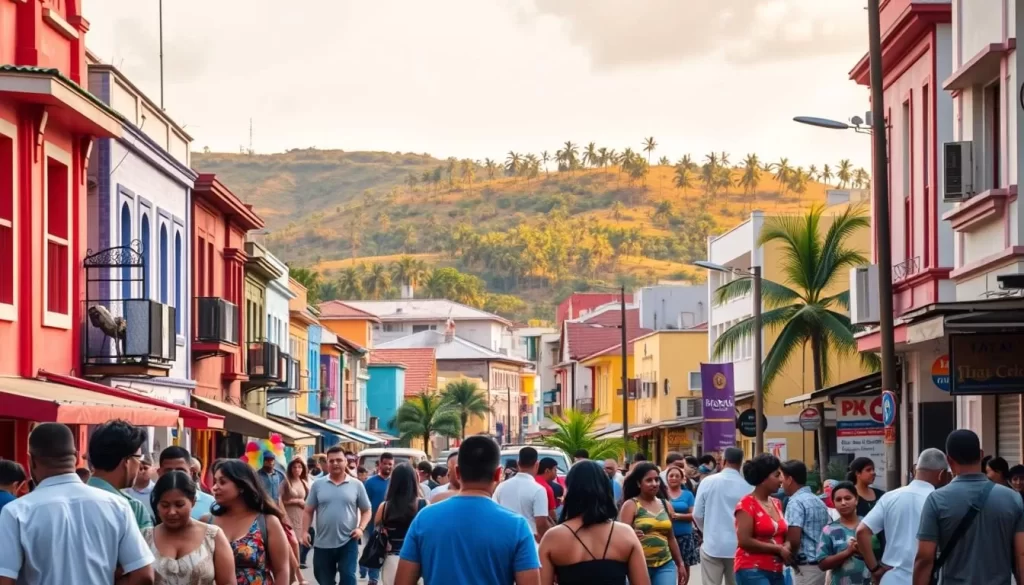
Population and Geographic Distribution
About 3 million people live in Santo Domingo, the capital. This urban hub is a melting pot of cultures and language influences. Beyond the city, rural areas showcase distinct dialects shaped by local traditions and historical roots.
The country’s geographic diversity also plays a role. Coastal regions often have different phonetic traits compared to mountainous areas. For example, the dropped “s” and the transformation of “r” to “l” are common in everyday speech.
Language Variants and Dialects
Dominican Spanish is the primary dialect, but it’s far from uniform. Influences from Andalusian and Canarian Spanish are evident, alongside traces of African and indigenous languages. These elements add richness to the vocabulary and pronunciation.
In some regions, you’ll hear unique words and phrases that aren’t used elsewhere. This regional variation makes the language spoken in the Dominican Republic a fascinating subject for linguists and travelers alike.
“Language is the roadmap of a culture. It tells you where its people came from and where they are going.”
Understanding these nuances offers a deeper appreciation of the country’s cultural heritage. Whether you’re exploring Santo Domingo or a remote village, the language you hear will always tell a story.
Dominican Republic: Official and widely spoken languages
Step into the vibrant world of Dominican Spanish, where every word tells a story. This unique dialect is more than just a way of speaking—it’s a reflection of the country’s rich cultural identity. As the official language, it binds communities together and serves as a bridge to the past.
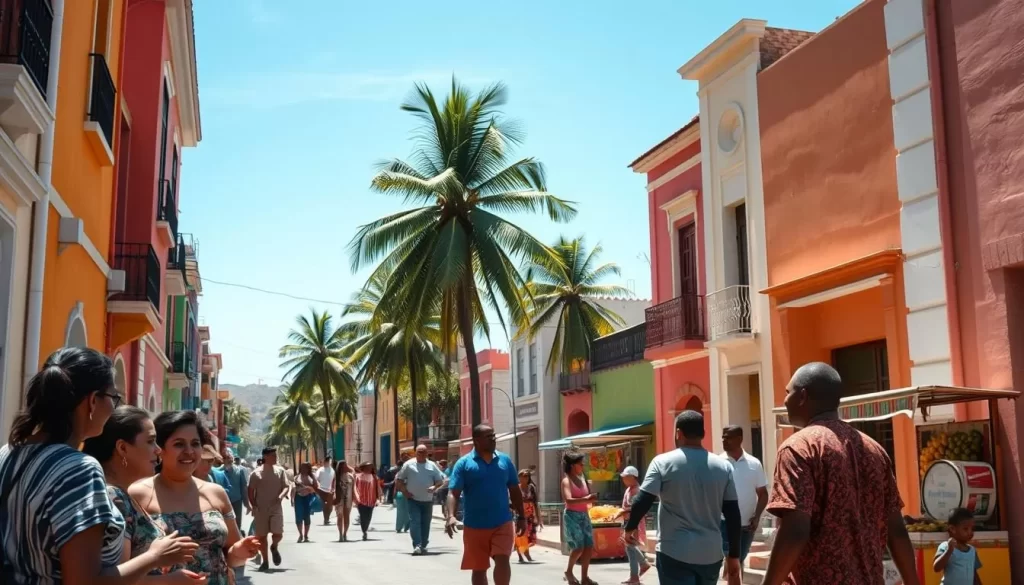
Dominican Spanish: The Primary Variant
Rooted in Spanish colonialism, Dominican Spanish has evolved into a distinct variety. Its origins trace back to Andalusian and Canarian dialects, but it also carries traces of African and indigenous Arawak influences. This blend creates a linguistic tapestry that’s both familiar and uniquely its own.
One of the most striking features is its pronunciation. Words often drop the final “s” or transform “r” into “l,” giving it a melodic rhythm. These traits make it instantly recognizable, even among other Caribbean Spanish dialects.
Vocabulary is another area where Dominican Spanish shines. Many words have been preserved from older Spanish forms, while others are entirely unique. For example, “guagua” means bus, and “zafacón” refers to a trash can—terms you won’t hear elsewhere.
“Language is the soul of a culture, and Dominican Spanish is no exception.”
This dialect isn’t just about words—it’s about connection. It’s how locals express humor, share stories, and celebrate their heritage. Whether you’re in a bustling city or a quiet village, the language you hear will always feel alive and full of character.
Understanding Dominican Spanish offers a deeper appreciation of the country’s history and culture. It’s a reminder that every word carries the weight of centuries, shaped by the people who’ve called this place home.
Cultural and Historical Influences on Language
The language of the Dominican Republic tells a story of its past and present. It’s a blend of colonial legacies, African heritage, and indigenous roots. Each word and phrase reflects the country’s rich history and cultural evolution.
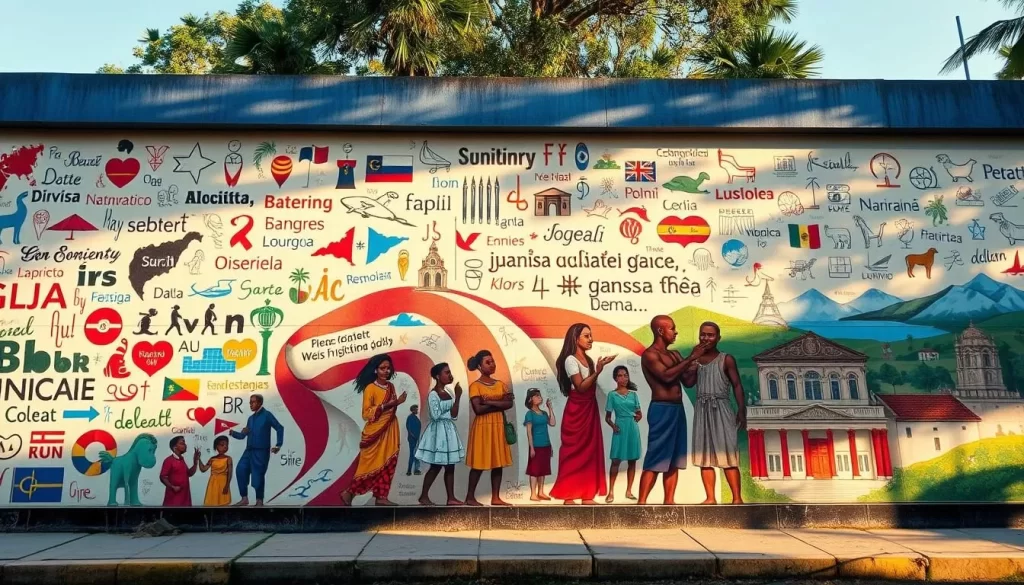
Spanish Roots and Colonial Impact
Spanish colonialism left a lasting mark on the language structure and vocabulary. The dialect spoken today traces its origins to Andalusian and Canarian Spanish. These influences shaped pronunciation, grammar, and everyday expressions.
For example, the dropped “s” and the transformation of “r” to “l” are common traits. These features give the dialect its unique rhythm and melody. Many words from older Spanish forms are still in use, preserving a connection to the past.
African and Indigenous Contributions
Descendants of enslaved immigrants brought African languages to the region. Their influence is evident in the rhythm, intonation, and vocabulary of modern speech. Words like “mamajuana” and “guineo” have African origins, enriching the linguistic tapestry.
Indigenous Arawak contributions are also significant. Words like “hamaca” (hammock) and “cacique” (chief) are still used today. These elements highlight the resilience of indigenous culture in the face of colonial dominance.
“Language is the soul of a culture, and every word carries the weight of history.”
The government has played a role in preserving this linguistic heritage. Policies promote Spanish as the official language, while acknowledging other cultural influences. This balance ensures that the country’s diverse roots are celebrated and remembered.
Understanding these influences offers a deeper appreciation of the language spoken in the Dominican Republic. It’s a testament to the resilience and creativity of its people, past and present.
Minority Languages and Their Societal Impact
Beyond the dominant Spanish, the Dominican Republic is home to a variety of minority languages that enrich its cultural fabric. These languages not only reflect the nation’s diverse history but also play a crucial role in shaping societal interactions and community bonds.
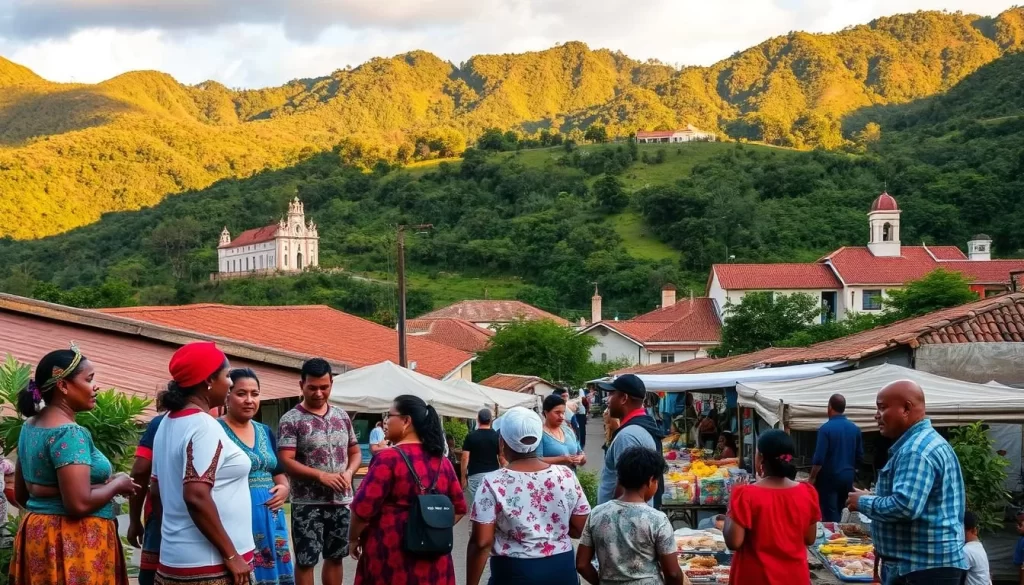
Haitian Creole: A Bilingual Bridge
Haitian Creole is spoken by over 160,000 residents, primarily Haitian immigrants and their descendants. This language serves as a vital bridge between communities, fostering communication and understanding. Its origins trace back to French and African influences, making it a unique blend of linguistic traditions.
In daily life, Haitian Creole helps bilingual individuals navigate both Haitian and Dominican cultures. It’s common to hear this language in markets, neighborhoods, and workplaces, especially in areas with a high concentration of Haitian immigrants.
Samana English: Endangered and Unique
Samana English, spoken by around 12,000 people, is a fascinating yet endangered language. Its roots lie in the Samana Americans, descendants of African-American settlers who arrived in the 19th century. This variety of English carries historical significance, preserving a piece of the nation’s past.
However, government policies and societal shifts have led to its decline. Efforts to preserve this unique language are ongoing, but its future remains uncertain.
Foreign Language Education and Tourism
Foreign language education plays a key role in the Dominican Republic, especially in tourist areas. Schools often teach English and French to accommodate visitors and expatriates. This focus on multilingualism enhances the country’s appeal as a global destination.
For tourists, knowing a few words in Spanish or Haitian Creole can enrich their experience. Locals appreciate the effort, and it often leads to more meaningful interactions. This emphasis on language learning highlights the nation’s commitment to embracing its linguistic heritage of the nation.
“Language is the thread that weaves communities together, creating a tapestry of shared experiences.”
Minority languages like Haitian Creole and Samana English remind us of the Dominican Republic’s rich cultural diversity. They are not just ways of speaking but also symbols of resilience, history, and unity.
Conclusion
The linguistic heritage of this Caribbean nation is a vibrant blend of history and culture. Spanish, the official language, is spoken by the majority, with its unique dialect reflecting colonial and African influences. From the bustling streets of Santo Domingo to rural villages, the way people speak tells a story of resilience and creativity.
Minority languages like Haitian Creole and Samana English add depth to the country’s linguistic tapestry. These languages, spoken by descendants of immigrants, highlight the nation’s cultural diversity. Government policies and educational programs further shape how languages are used and preserved.
Whether you’re planning a visit or simply curious, exploring the language of this country offers a deeper understanding of its people and traditions. Dive into its rich heritage and discover how every word connects to its past and present. For more insights, check out this detailed overview of its cultural and linguistic landscape.
The above is subject to change.
Check back often to TRAVEL.COM for the latest travel tips and deals.





